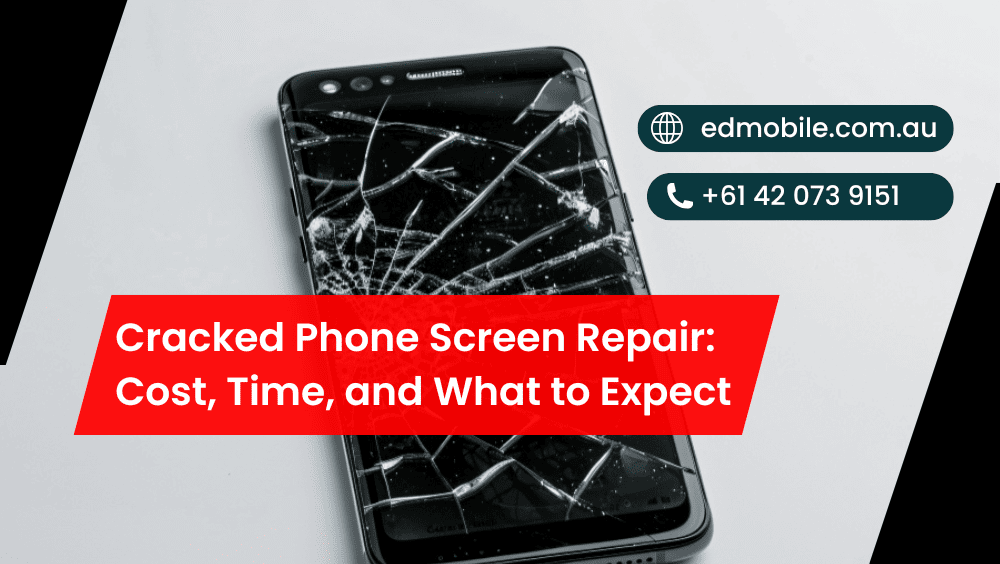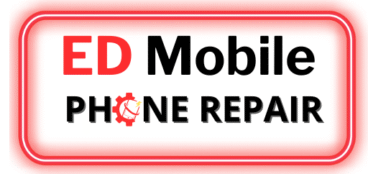
Cracked Phone Screen Repair: Cost, Time, and What to Expect
You look down, your heart sinks, and there it is—spiderwebs across the glass. Maybe it still works “if you tilt it just right.” Maybe the touch is jumpy, or the screen has those inky black bruises. Either way, you’re here because you want the straight story: how much does cracked phone screen repair cost, how […]
You look down, your heart sinks, and there it is—spiderwebs across the glass. Maybe it still works “if you tilt it just right.” Maybe the touch is jumpy, or the screen has those inky black bruises. Either way, you’re here because you want the straight story: how much does cracked phone screen repair cost, how long will it take, and what actually happens during the fix? You have so many queries reeling inside your mind in this regard, right ?Let’s keep it simple, honest, and human.
First things first: Do you really need a repair?
Short answer: probably. A cracked screen isn’t just ugly—it can get worse fast. Hairline cracks spread, dust and moisture creep in, sharp edges nick fingers, and touch can fail at the worst moment (like paying at checkout). If the display is totally black, flickering, or showing bleeding ink (on OLEDs), the display layer is damaged—not just the top glass—so you’ll need a full screen assembly replacement. If the phone looks fine but the touch doesn’t respond, the digitizer (the touch layer) is toast, same deal.
A tiny corner chip and everything works? You can wait. Just know: one more drop and it might be game over, and repair costs typically don’t go down over time. Get details about Mobile Repair Shop in Wattle Grove.
What actually gets replaced?
As we all are in the know of the fact that most of the modern phones (iPhone, Samsung, Google Pixel, etc.) Incorporate a laminated display assembly: glass + touch layer + display (OLED or LCD) blended together. Shops generally restore the entire assembly because it’s faster, more reliable, and the factory adhesive is designed that way. It also keeps dust out and restores the seal better than fragmentary fixes.
If your frame is having following issues like a bent or the corners are crushed, a skilled professional will fix it by straightening or replacing the housing so that the new screen fits flat and the seal isn’t compromised.
LCD vs OLED: why Screen types matter
* OLED/AMOLED (many iPhones since X and most Samsung flagships): awesome contrast, sleeker, but expensive to replace. If you notice inky blotches or lines, that’s OLED damage.
*LCD (many budget and older models): cost effective to replace, slightly thicker, sometimes a bit less bright or contrasty.
The screen type is a substantial cost influencer, so it’s worth knowing which one you have. Looking for a Mobile Repair Shop in Liverpool?
The cost: what affects the price?
There isn’t one number for everyone (annoying, I know), but you can understand the pricing recipe:
* Phone model & screen tech – Flagships with OLEDs cost more. Mid-range LCDs cost less.
* Part quality – Genuine or OEM parts typically cost more and look perfect; high-grade aftermarket can save money with small trade-offs in color/brightness. Ask your shop what they’re using.
* Frame/housing work – Bent frames or dented corners add labor.
* Water-resistance reseal – If your phone was IP-rated, proper resealing with new gasket and adhesive is extra time and materials.
* Warranty & service level – Shops that back parts and labor for 3–12 months often charge a bit more (and it’s usually worth it).
Ballpark ranges (just to plan your wallet)
* Flagship OLED phones (recent iPhone Pro/Samsung S/Note/Ultra): typically higher tier pricing.
* Standard OLED or older flagship: mid–high tier.
* LCD-based phones (many budget/mid models): lower–mid tier.
Service charges differ in accordance with the city and the part availability, so the most brilliant move is to get a quick quote from a genuine service center with your actual model number. Ask them to list part type, warranty, and any frame or reseal fees up front. No surprises later.
How long does screen repair take?
Faster than most people think. A straightforward screen assembly swap is often 30–120 minutes once the part is in stock. Some shops offer same-day service for popular models; others need a few hours for testing and resealing. Add time if:
* The phone is bent and needs housing work.
* The screen requires true tone/color calibration or software pairing (certain iPhones).
* The shop is restoring an IP water seal and wants adhesives to set properly.
* You’re queuing at peak hours (lunch, after work, weekends).
If the part needs to be ordered, many shops can still turn it around within a day or two. Ask about appointment vs. walk-in—appointments cut waiting time a lot. Get details about Phone Repair in Edmondson Park.
What to expect during the repair (behind the counter)
A good repair looks like this:
* Check-in & diagnostic: Tech tests your phone—touch, front/back cameras, Face ID/Touch ID, speakers, mic, proximity sensor, charge port. Why? To separate pre-existing issues from new parts.
* Power down & open-up: Gentle heat softens adhesive. Screws out, display off.
* Transfer parts: Earpiece/speaker mesh, camera brackets, sensors, seals—moved to the new screen if they aren’t included.
* Frame prep: Clean old adhesive, straighten edges, fit new gasket if restoring water resistance.
* Install & examine: A new screen is replaced or attached , the phone is rebooted, and everything gets tested again—brightness, color, touch edges, cameras, ambient/proximity sensor, Face ID/Touch ID, and speaker grills.
* Final seal & cleanup: The screen is seated, screws torqued, adhesive set, and also the phone is wiped down . You will get your phone back completely or perfectly fixed with a warranty card or invoice.
Pro tip: back up your data before you hand it over. Good shops won’t wipe your phone, but backups are cheap insurance for your photos and chats.
Genuine vs. aftersales : which option is reliable?
* Genuine/OEM provides you factory-matched color, brightness, and often better longer span . If your phone is brand new or you’re choosy about display quality (hello aspiring , photographers/designers), this is your ideal choice .
* Premium aftermarket can be a smart budget move. Quality varies wildly, though—good aftermarket looks great; bad aftermarket looks blue/green or dims faster. Ask to see a sample or check return policies.
* Face ID/Touch ID note: On many phones, the biometric sensor is paired to your motherboard. Good shops transfer your original sensor so biometrics keep working.
Will I lose water resistance?
Short version: it can be restored but never guaranteed. Even brands that reseal at the factory consider liquid damage “not covered.” A careful reseal with fresh adhesive and proper compression helps a lot, but if your lifestyle involves pools or the beach, be cautious after any repair—any repair shop, any brand. Looking for a Mobile Repair Shop in Austral?
DIY vs. professional repair
DIY screen kits exist. If you’re comfortable with tiny screws, heat, adhesives, cable routing, and the occasional oops, you can try it. Just remember:
* You’ll need proper tools and patience.
* Cheap parts may look washed out or break easily.
* One slip can nick a flex cable or crack the new screen during install (painful).
For most people, a professional phone repair is faster, safer, and often cheaper than buying tools + a second screen after a DIY mistake.
Insurance, warranties, and other ways to save
* Manufacturer or carrier care plans may cover screen damage with a service fee. Check your plan before paying full price.
* Credit card benefits sometimes include purchase protection for accidental damage within a time window. Worth a peek.
* Tempered glass & a rugged case after repair will pay for themselves the first time your phone bounces off concrete. And yes, apply the protector the same day—it won’t “ruin” the new screen.
Aftercare: make that new screen last
* Let adhesives set: If the shop fixed your phone, do away with too much pocket pressure, swimming, or saunas for at least 24 hours.
* Use a good protector: chances are rare for a tempered glass or a quality film to get scratched and splintered easily .
* Mind heat and pressure: Avoid leaving your phone on a hot dashboard or stuffed under weights in a gym bag.
* Case up: A case with raised lips around the screen and camera makes a real difference.
Related Articles:
» Fixing a Cracked Screen: What to Expect from a Phone Repair Service
» Phone Screen Repair: What You Should Know
» Protect Your Device: Why Screen Protectors Are Essential
» How to Prevent Future Damage After a Phone Repair?
» Top 7 Signs Your iPhone Needs Immediate Repair
Understanding the Cost, Time, and Process of Cracked Phone Screen Repairs
Cracked phone screen repair doesn’t have to be stressful. Costs depend on your model and part quality; time depends on stock and how busy the bench is. A reliable shop will diagnose, quote clearly, replace the assembly, examine everything, and hand the phone back looking brand new (or very close). You walk away with your data intact, a warranty in your pocket, and a promise to buy a case this time. Probably.
Connect with ED Mobile for phone repare in Edmondson Park, Book Your Repair Now
If you’re ready, grab your exact model name (or the model number in Settings → About), ask for an itemized quote with part type and warranty, and book a slot. Thirty to ninety minutes later, you’ll be back to tapping, swiping, and—hopefully—dropping it a lot less.





Leave a Reply
Comments are closed for this post.